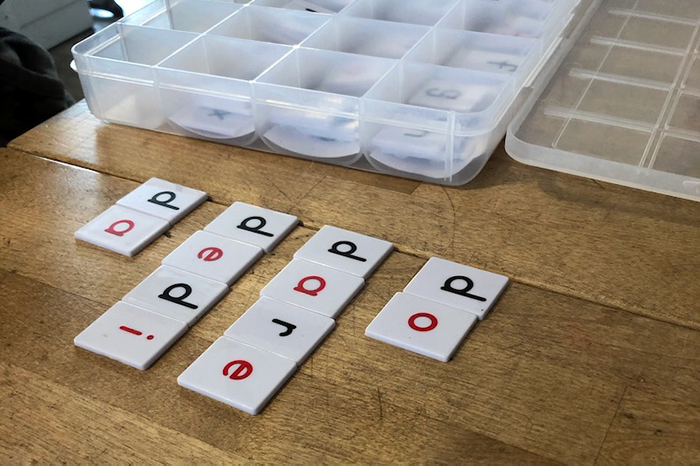
It’s one of the most common questions I see from homeschool families: “Where should I place my child?” When we switched curriculum five years ago, it took me months to decide where to place our struggling learner with Memoria Press! I’ve learned a lot since then and this yearly process is now far easier than it used to be.
Here are my top tips for placing a struggling learner with Memoria Press!
Where to Start
If you read nothing else in this post, please remember this: base all your decisions on the child in front of you and where they are in this moment.
This is key. Otherwise, our children will never truly progress.
Memoria has two resources for figuring out where your children are at: the Scope & Sequence and the Simply Classical Assessments.
My favorite is the Simply Classical assessments. These are PDF’s you can go through, as a parent, to see your child’s strengths and weaknesses, bothacademic and developmental.
We’ve been with MP/SC for five years and I still refer to these!
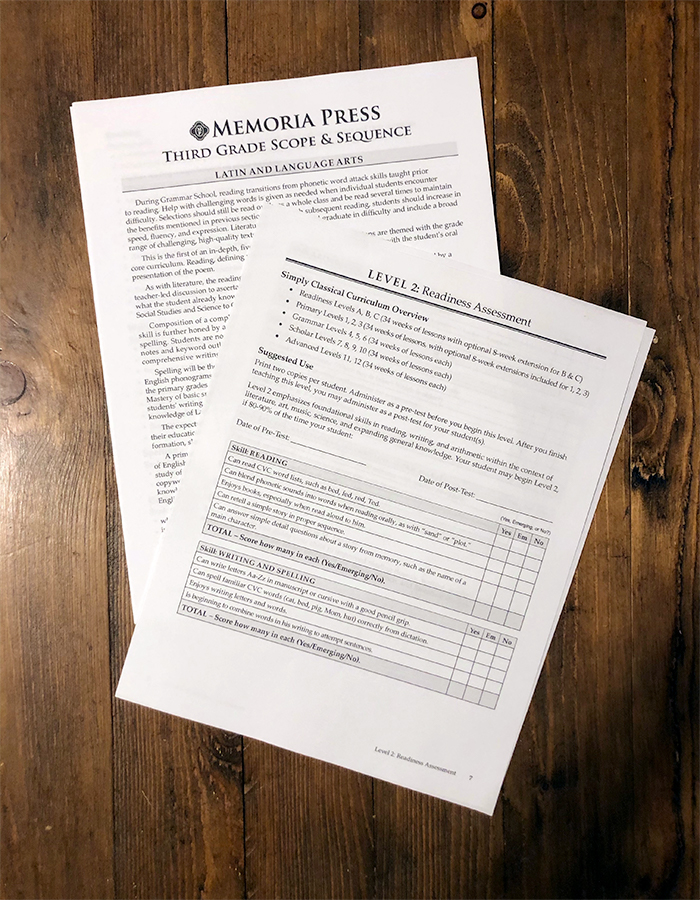
While the assessments focus on your child, Memoria’s Scope & Sequence focuses on the main curriculum. This PDF gives amazing insight into the goals and expectations for each grade level.
With information from these resources, you’re ready to decide how to place your struggling learner with Memoria Press.
Option 1: Modifying
This post contains affiliate links. Links to free items may place an affiliate cookie on your device for future purchases. Purchases help support our family at no additional cost to you. For more details, see our full disclosure and privacy policy.
By the time we found MP/Simply Classical, one of our struggling learners was already 13.
I sincerely wish we had Simply Classical when he was young. I cannot tell you how many tears would have been avoided and how many gaps would have been prevented!
We placed him with MP’s 7th grade curriculum, substituting Latin, composition, grammar, and geography from earlier levels. We also used our own math.
Modifying the main core was the only available choice for him; but he still struggled with comprehension, memory, and other challenges. Support from the Simply Classical community was critical for us.
Even though he wasn’t using Simply Classical, Cheryl and the moms in the Simply Classical Forum walked with us the whole way.
They helped me see that my son needed more modeling from me. He needed more explicit direction. He needed more specific accountability, and he needed to work with the material in multiple ways.
He’s now in high school and doing better than I ever imagined he would. We used to celebrate when he achieved 78% mastery in his studies. Now, he’s achieving 85 to 95%.
And that’s an important thing to remember — especially for a child who struggles: Grades simply show us how far we’ve come and where we have yet to go.
Option 2: Simply Classical
If your child’s age or academic development falls within the levels of Simply Classical, you may want to teach your child directly from that program.
The benefit of this, even for mild special needs, is that everything has been constructed with your child in mind. The over-teaching, the consistently paced review, the modeling, the baby steps, the explicit direction.
You’ll find these in the main curriculum, but you will find them to a much greater degree in the Simply Classical program. It also includes the pacing changes that are often needed.
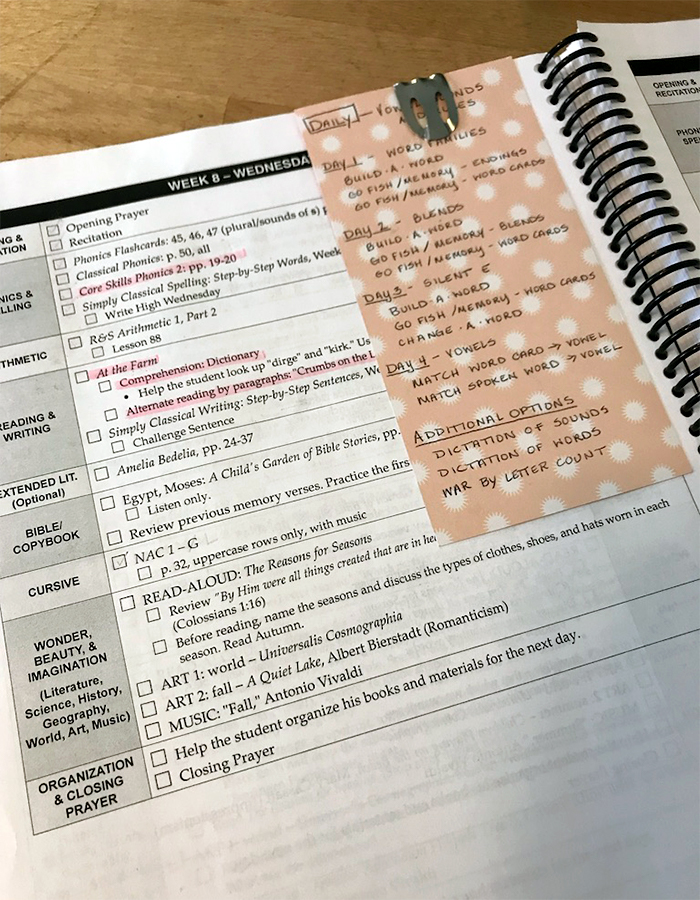
Everything is laid out so we can spend our time teaching and supporting our children, rather than trying to modify their studies. And that extra time helps our children.
There will be times, even in Simply Classical, when a specific concept or subject may require us to add more review, or more types of practice.
That’s the nature of special needs. But even in those cases, I’m only building off of what is already there instead of having to reinvent the wheel.
Option 3: Mash-up
A third option is to do what many veteran moms call a mash-up. That’s where you use Simply Classical only for the subjects your child struggles in, and you use Memoria’s main core for everything else.
This works well when your child’s needs are really subject-specific, but if your child’s struggles affect multiple subjects, it’s often better to use Simply Classical and just customize between levels within that track. See this video for tips on customizing an MP curriculum order!
Three Dangers When Placing Your Struggling Learner
When placing a struggling learner, we moms often fall into three common traps. These traps can have a serious effect on our decisions and our child’s ability to thrive.
Assumptions
One of the most dangerous things we can do is make assumptions about our child and/or their abilities.
We have to be honest with ourselves or we’ll never see our child thrive.
We’ll say things like “It will go away,” or, “They just need more time.”
Mild special needs may improve on their own after several years, but I guarantee it will only be through years of unnecessary tears and misery.
Sometimes, when we wait for things to get better, the struggles become more ingrained. Our children’s confidence is affected and bad habits develop.
We wouldn’t wait on care for a child with medical special needs. We shouldn’t wait to support our children with academic needs.

Another thing we may say is, “This book is too easy,” or “They already know that part.”
This is where we have to remember to look at the whole child. Maybe they can read the literature backwards and forwards; but if they struggle to write complete sentences, let the reading be easy. Then they can focus their brain power where they struggle.
Focusing on Grade Level
The second trap we fall into is focusing on grade level. Again, the only thing that matters is where your child is at, at this moment.
My 12 year old is currently in second grade math. I have no idea what high school will look like for him, but I know he will be much further along when he gets there if I meet him where he’s at now.
If I had pushed him through, he might be “doing” 6th grade math right now. But he would have no understanding or mastery of it. And he would have to stop and go backwards before starting higher math.
Even then, he would likely enter high school convinced that he simply isn’t good at math.
My son’s ability to truly know is worth infinitely more than the number written on a book cover.
Comparison
We know what it’s like when people says someone else is doing something better than us.
We know how much we compare ourselves to others as we scroll through Instgram, or visit our sister-in-law’s perfect house.
Our kids are no different.
They know when they are being compared to others and you can bet they already compare themselves to their friends, siblings, and cousins. We don’t need comparison in our lives and our kids don’t need it either.
In the next post in this series, we’ll get into the nitty-gritty details of teaching a struggling learner!
In the meantime, if you want to know more about how to place your struggling learner with Memoria Press, be sure to visit the MP Forum or the Simply Classical Facebook Group.
CHECK OUT OTHER POSTS IN THIS SERIES!
- Struggling Learners: Mild Needs are Special Needs
- How to Place a Struggling Learner with Memoria Press
- 5 Essential Tips for Teaching Your Struggling Learner (coming soon!)
- Helping A Struggling Learner When You Have Multiple Children (coming soon!)
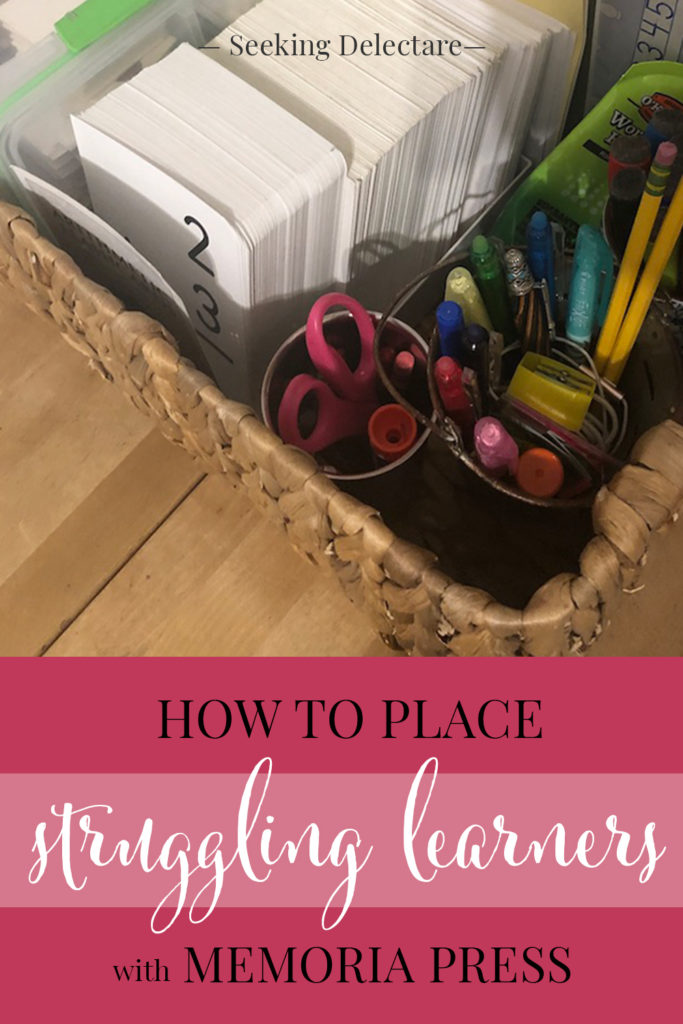
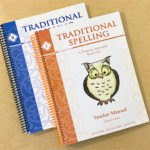

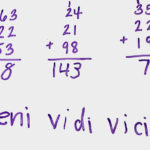
Leave a Reply